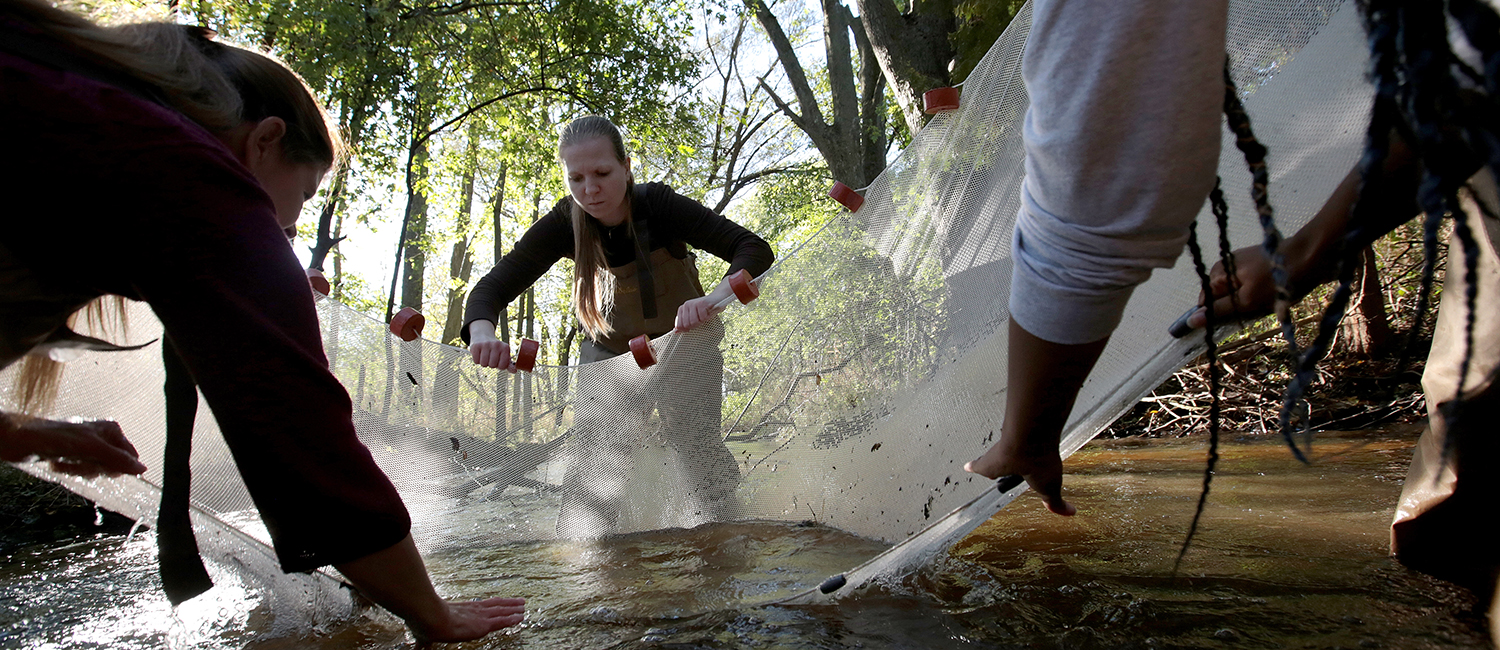The Freshwater Collaborative of Wisconsin has identified 10 Grand Water Challenges facing the state of Wisconsin. These challenges affect many of our state’s largest industries, including agriculture, recreation and tourism, shipping, commercial fishing, energy production, manufacturing, mining, and water technology and infrastructure.
Agricultural Water Management
Challenges: Irrigation over-withdrawal; nutrient, pesticide, herbicide runoff and contamination of groundwater; hormone and antibiotic release into the environment; farm policy impacts
Benefits to Addressing: Lower pumpage, fertilizer and antibiotic costs; reduced contaminant loading to watersheds; improved fisheries; safer drinking water; improved resilience; healthy, productive soils; increased efficiencies of production and profit margins
Water Quality Safety and Emerging Contaminants
Challenges: Public health, lead poisoning, legacy contamination, emerging contaminants and nanomaterials, nutrient contamination, well contamination, surface water contamination, safe drinking water compliance, effective treatment techniques
Benefits to Addressing: Drinkable, swimmable, fishable waters; less lead ingestion; higher water quality; elimination of fish consumption advisories; increased waterfront property values; reduced beach advisories
Industrial Water Engineering and Technology
Challenges: access and risk, efficiency, discharge and treatment, reuse, workforce
Benefits to Addressing: New intellectual properties; lower costs for businesses; guaranteed access to supply; skilled talent; entrepreneurial water community; attract new business to the state; reduce business risk
Great Lakes Management, Protection and Restoration
Challenges: Legacy contamination, emerging contaminants, nutrient contamination, loss of habitat, invasive species, water levels, fisheries, restoration and protection policies
Benefits to Addressing: Drinkable, swimmable, fishable waters; increased property values on Great Lakes waterfronts; mitigation of impacts of lake level fluctuation, increased recreation and tourism opportunities; improved recreational fish stocking practices; protection against invasive species
Water Infrastructure: Collection, Distribution, Treatment
Challenges: Costly water and sewer main maintenance and replacement; aging distribution system components; non-revenue water loss; reservoir and tank maintenance; overflow; aging treatment plants
Benefits to Addressing: Safe drinking water; swimmable, fishable waters; reduced environmental impacts; increased waterfront property values; reduced flooding and basement backups; fewer overflow events; fewer water main breaks
Water Business, Law and Finance
Challenges: Informed operations management, utility rate management, success rate of water technology startups, financing critical infrastructure
Benefits to Addressing: Water manufacturing industry growth, economic investment, more water savvy executives, job creation, cost management
Watershed Management and Restoration
Challenges: Legacy contamination, emerging contaminants, nutrient contamination, loss of habitat, invasive species, water levels, fisheries
Benefits to Addressing: Swimmable, fishable, drinkable water; increased property values near waterfronts; mitigation of the impacts of lake level fluctuation; increased recreation and tourism opportunities; improved fisheries; improved recreational fish stocking practices; protection again invasive species; mitigating algal blooms
Water Security, Protection and Resilience
Challenges: Threats to supply; catastrophic events; food safety; climate resilience; maritime transportation of potentially harmful goods; spills, flooding and droughts; planning and resiliency
Benefits to Addressing: Improved drinking water safety; readiness for catastrophes to water resources; reduced water risk to industrial users
Healthy Recreational and Transportation Water Use
Challenges: Surface water quality, public health, beach safety, legacy contamination in seafood, ballast water contamination
Benefits to Addressing: Swimmable, fishable, drinkable water; improved recreational and tourism opportunities; reduced risk associated with beaches; reduced risk from consuming seafood; improved public health
Aquaculture, Aquaponics and Water Food Systems
Challenges: Aquaculture and aquaculture technologies; animal and plant science; economies of scale; food safety; food processing technologies; workforce
Benefits to Addressing: Clean sources of protein; reduced reliance on imported seafood; reduced reliance on unsustainable marine fisheries; healthier seafood; more jobs

